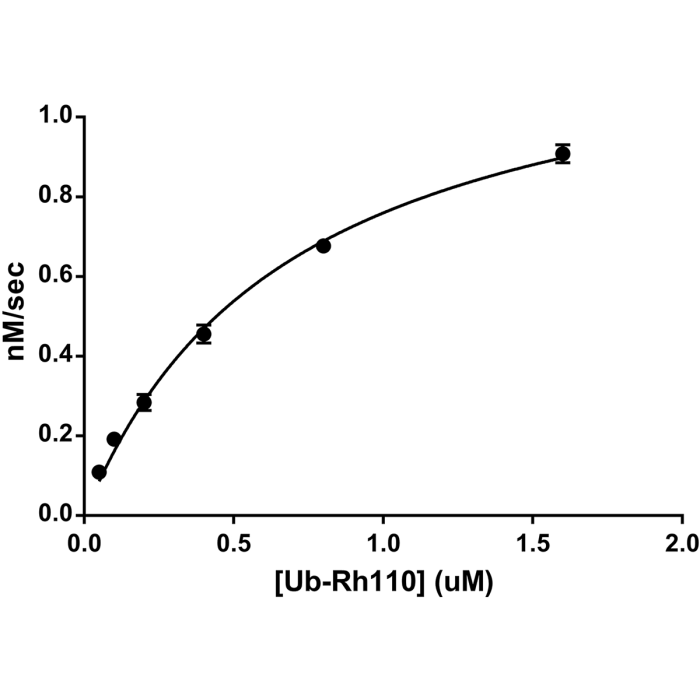Cookie Policy: This site uses cookies to improve your experience. You can find out more about our use of cookies in our Privacy Policy. By continuing to browse this site you agree to our use of cookies.
SouthBayBio
UcH-L3 (human) (rec.) (untagged)

| Product Details | |
|---|---|
| Synonyms | Ubiquitin C-terminal Hydrolase L3; Ubiquitin Thioesterase L3 |
| Product Type | Protein |
| Properties | |
| Source/Host | E. coli |
| Sequence | Human UcH-L3 (aa 1-230) (Accession Nr. P15374) is untagged. |
| Crossreactivity | Human |
| Application | Typical working concentration range is 0.5-5nM. |
| MW | ~26kDa |
| Purity | ≥95% (SDS-PAGE) |
| Concentration | Lot dependent. |
| Accession Number | P15374 |
| Formulation | Liquid. In 50mM HEPES pH 7.5, 100mM sodium chloride, 1mM TCEP. |
| Other Product Data |
Click here for a Typical Lot-specific Product Datasheet from the Original Manufacturer |
| Declaration | Manufactured by South Bay Bio. |
| Shipping and Handling | |
| Shipping | DRY ICE |
| Short Term Storage | -80°C |
| Long Term Storage | -80°C |
| Handling Advice | Aliquot to avoid freeze/thaw cycles. |
| Use/Stability | Stable for at least 1 year after receipt when stored at -80°C. |
| Documents | |
| Product Specification Sheet | |
| Datasheet |
 Download PDF Download PDF |
UCHL3 (Ubiquitin C-terminal Hydrolase L3) is a deubiquitinating enzyme (DUB) that controls levels of cellular ubiquitin through processing of ubiquitin precursors and ubiquitinated proteins. It is a thiol protease that recognizes and hydrolyzes a peptide bond at the C-terminal glycine of either ubiquitin or NEDD8. It plays a role in regulating apical membrane recycling and indirectly increases the phosphorylation of IGFIR, AKT and FOXO1 and promotes insulin-signaling and insulin-induced adipogenesis. It is required for stress-response in retinal, skeletal muscle and germ cell maintenance. UCHL3 is also known to hydrolyze UBB(+1), a mutated form of ubiquitin which is not effectively degraded by the proteasome and is associated with neurogenerative disorders. It digests precursors and ubiquitinated proteins to generate monomeric ubiquitin.





